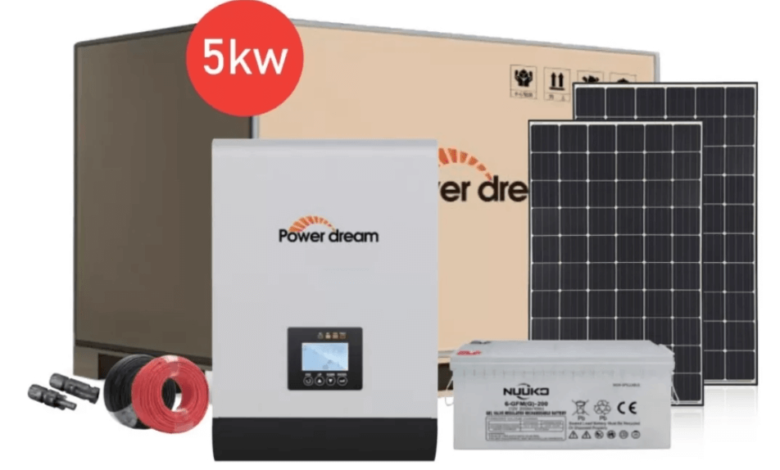Southeast Asia Off Grid Home Solar System Trends: Building Solar Homestays

As tourism grows in Southeast Asia, local entrepreneurs transform remote properties into eco-friendly accommodations powered entirely by off grid home solar systems. These “solar homestays” combine rural charm with modern green technology to give travelers a unique experience of comfort and environmental protection. This article will explore the off-grid home solar system deployment trends for solar homestays, covering system size, battery selection, modular panel configuration, integration with local microgrids, financing models, community participation, and regulatory environment, combining actual cases and project experience.
Solar Homestay Off Grid Home Solar System Sizing
The right system size is the foundation of any successful off grid home solar system. Unlike urban rooftop solar systems, homestays typically contain multiple bungalows, common areas, and facilities such as lighting, cooling, and Wi-Fi, all of which require a reliable power supply. Trendsetters in Southeast Asia are specifying 5 to 20 kw systems for each homestay and performing load analysis, which considers the peak nighttime LED lighting usage, guest device charging, and daytime off-peak loads such as solar water heaters and air circulation. With intelligent energy management systems, homestay operators can monitor power usage in real time and adjust solar panel arrays or battery reserves accordingly. By choosing the right size of solar panels and inverters, homestay operators can ensure uninterrupted service during monsoon seasons and days of cloud cover.
Off grid home solar system battery technology for reliable nighttime power
A powerful off-grid home solar system relies on energy storage. Traditional lead-acid batteries are gradually being replaced by lithium-ion batteries and emerging flow battery technologies, which have deeper discharge depths, longer cycle life, and lower maintenance costs, which are critical for remote solar homestays in the humid environments of Southeast Asia. In addition, many developers now integrate 48v to 96v lithium-ion battery packs with a battery life of up to two to three days, ensuring that guests will not experience power outages even during long, cloudy days. BMS prevents overcharging, deep discharge, and thermal runaway. Adding modular battery racks enables scalable capacity expansion, which is essential for homestay expansion or new facilities.
Off grid home solar system modular panel configuration, flexible installation
Solar homestays benefit from modular off-grid home solar system design to adapt to various site terrains. Rather than a single large array, operators deploy multiple small “clustered solar panels” on bungalow rooftops, balcony awnings, and ground mounts. This modular approach simplifies installation on the uneven terrain familiar in coastal and mountainous areas of Southeast Asia. Each cluster is connected to a microinverter via a DC combiner box, enabling granular monitoring and isolating issues such as shade from palm trees or passing clouds. Meanwhile, quick plug-and-play expansion kits enable B&BS to add solar panels seasonally as guest capacity increases. As a result, solar B&Bs minimize environmental disruption while remaining cost-effective.
Integration with local microgrids and community sharing
The emerging trend of off-grid home solar systems emphasizes community resilience through microgrid integration. Solar B&Bs in rural Thailand and Indonesian islands work with local microgrids to feed excess daytime generation to shared battery banks. At night, B&Bs tap into communal energy storage systems, optimizing asset utilization and reducing unit system costs. Smart controllers manage power flows, prioritizing critical loads during island-wide blackouts. These partnership models encourage knowledge transfer, shared maintenance responsibilities, and equitable access to clean energy. Solar homestays help stabilize local power supply by participating in microgrids, reduce reliance on diesel generators, and build friendly relations with neighboring villages.
See also Unlock Cost-Effective Access to Premium SEO and AI Writing Tools with Group Buy Services
Community Engagement and Skill Development
Sustainable solar homestays focus on local capacity building while deploying the system. Off grid home solar system installation companies often hold hands-on training workshops for homestay staff and community volunteers, covering solar panel cleaning, building management system monitoring, and preventive maintenance. Operators can ensure long-term system reliability and create jobs by developing solar technology skills in host communities in remote Vietnamese rice terraces or jungle resorts in Bali. Multi-stakeholder collaboration with NGOs further institutionalizes solar expertise and builds a skilled workforce to support Southeast Asia’s expanding solar tourism projects.
Create a Sustainable Accommodation Experience
Southeast Asia’s booming solar homestay trend depends on strategically deploying advanced off-grid home solar system solutions. Solar homestays fully embody how clean energy can empower rural tourism, from precise system sizing and cutting-edge battery selection to modular panel design, community microgrids, innovative financing, and strict regulatory guidance. By building these homestays on reliable, scalable off-grid solar power, developers are not only enhancing the guest experience but also strengthening local resilience and environmental awareness.





